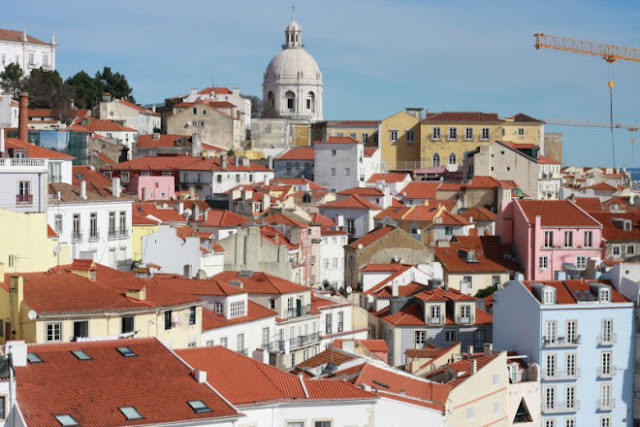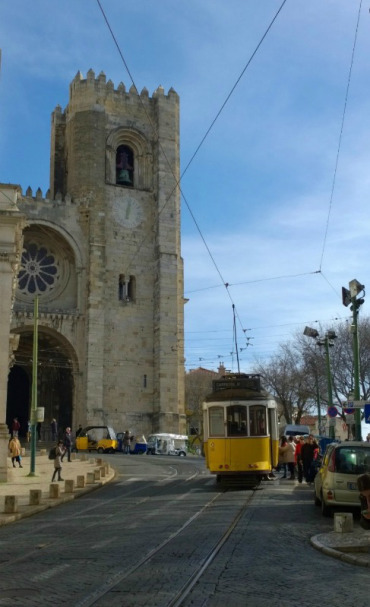Saturday, 23 April 2016
Friday, 22 April 2016
Lisbon Chronicles | Príncipe Real
The neighborhood of Principe Real (it means Royal Prince and the name was given in honor of the prince D. Pedro, son of D. Maria II and who was to become Dom Pedro V) is one of the nicest neighborhoods in the city of Lisbon. The gardens and quiet squares lined with colorful palaces, the antique shops, restaurants and bars, tourists who walk and senior citizens playing deck in the shade of trees all contribute to its undeniable charm.
The real estate recovery has turned the Príncipe Real neighborhood an increasingly attractive place to live and the quality of the commerce makes it a place to visit that can not to be missed. You can get there by car (has several parking lots), but the easiest way for those visiting the city is to take the metro to Rato station. From there follow the Rua da Escola Politécnica, where you can find the Natural History Museum of Lisbon and the Botanical Garden. A few more meters and you reach the Principe Real square with its pleasant garden.
There you’ll find a kiosk where you can buy cold drinks or coffee. If you want to know some Portuguese brands or to have lunch, you can visit the Embaixada (Embassy), an interesting commercial gallery, housed in a palace of the nineteenth century.
Continuing along Rua Dom Pedro V, and down towards the Chiado, you’ll find the viewpoint of St. Peter of Alcântara, were you must do a stop and look at the city. There you can follow to Chiado or take the elevator of Glory (funicular) and go down to Restauradores.
Monday, 18 April 2016
Lisbon Chronicles | Chiado
Chiado refers to a region of Lisbon which includes the square of the same name and the surrounding areas.
Between Bairro Alto and Baixa, Chiado is traditionally a shopping area where we can find from the most traditional shops (some of them centuries old) to more modern establishments.
Cafes and restaurants, churches and museums, theaters and designer shops concentrated within a few streets, make this part of Lisbon one of the most visited by tourists and frequented by the city’s habitants.
Thursday, 14 April 2016
Lisbon Chronicles | Baixa (Downtown)
These are the images of a walk through downtown Lisbon (from Rossio to the Praça do Comércio), in a cold and hazy afternoon. And although it is a city of light, the beauty of Lisbon does not fade in the absence of the sun.
Wednesday, 13 April 2016
Lisbon Chronicles | Alfama
Alfama is one of the oldest neighborhoods in Europe and surely one of the most picturesque of Lisbon. This medieval neighborhood escaped the earthquake of 1755 and keeps its Moorish and Jewish roots in many of its traits and characteristics.
The beautiful views of the city and the Tagus seduce both the travelers and the Lisbon people and a walk through its alleys, squares and viewpoints is absolutely mandatory wen visiting Lisbon.
On foot, if you are willing to climb the stone paved streets, or on board of the tram 28 (or on a tuk-tuk, the new fashion in Lisbon), you will discover at every turn of its winding streets an image worthy of a photograph.
Essential is a visit to Lisbon Cathedral (Church of St. Mary Major) whose construction began in the second half of the twelfth century, after the taking of the city from the Moors by D. Afonso Henriques (first king of Portugal). The various renovations and reconstructions after the Great Earthquake made today’s Cathedral a mixture of styles, having Romanesque, Gothic and Baroque elements.
Following the route of the tram tracks and passing the Largo do Limoeiro, you will find the Mirador de Santa Luzia, near the church of the same name. The view of the river and Alfama is stunning, allowing sight of the dome of the National Pantheon (Church of Santa Engrácia), the Church of Santo Estevão and the two white towers of the Church of São Miguel.
Continuing the tour we arrive at Largo das Portas do Sol from which extends a wide terrace (Belvedere das Portas do Sol) from where it reaches a magnificent view of the eastern side of Lisbon. On top of the hill on the left of the Pantheon dome, we see the Monastery of São Vicente de Fora. On its slopes, Alfama, on pastel colors descends, through the narrow winding streets, to the Tagus River.
In the lower part of the neighborhood you will find the Fado Museum and Casa dos Bicos. This 16th-century building, with its characteristic walls covered with diamond shape stones houses, currently, the José Saramago Foundation and the Archeological Site of the Lisbon Museum.
All being said, keep your map in your bag, your camera on your hands, and wander around. If in Summer, lunch in one of the many terraces and ask for grilled sardines. A good Portuguese wine wont’ be a bad idea and in the end you can indulge with a sweet desert and, of course, a smoking hot expresso (Portuguese call it Bica). Just like a local!
You can also check and bookmark my tip and location of Alfama neighborhood on TravelGap.
The beautiful views of the city and the Tagus seduce both the travelers and the Lisbon people and a walk through its alleys, squares and viewpoints is absolutely mandatory wen visiting Lisbon.
On foot, if you are willing to climb the stone paved streets, or on board of the tram 28 (or on a tuk-tuk, the new fashion in Lisbon), you will discover at every turn of its winding streets an image worthy of a photograph.
Essential is a visit to Lisbon Cathedral (Church of St. Mary Major) whose construction began in the second half of the twelfth century, after the taking of the city from the Moors by D. Afonso Henriques (first king of Portugal). The various renovations and reconstructions after the Great Earthquake made today’s Cathedral a mixture of styles, having Romanesque, Gothic and Baroque elements.
Following the route of the tram tracks and passing the Largo do Limoeiro, you will find the Mirador de Santa Luzia, near the church of the same name. The view of the river and Alfama is stunning, allowing sight of the dome of the National Pantheon (Church of Santa Engrácia), the Church of Santo Estevão and the two white towers of the Church of São Miguel.
Continuing the tour we arrive at Largo das Portas do Sol from which extends a wide terrace (Belvedere das Portas do Sol) from where it reaches a magnificent view of the eastern side of Lisbon. On top of the hill on the left of the Pantheon dome, we see the Monastery of São Vicente de Fora. On its slopes, Alfama, on pastel colors descends, through the narrow winding streets, to the Tagus River.
In the lower part of the neighborhood you will find the Fado Museum and Casa dos Bicos. This 16th-century building, with its characteristic walls covered with diamond shape stones houses, currently, the José Saramago Foundation and the Archeological Site of the Lisbon Museum.
All being said, keep your map in your bag, your camera on your hands, and wander around. If in Summer, lunch in one of the many terraces and ask for grilled sardines. A good Portuguese wine wont’ be a bad idea and in the end you can indulge with a sweet desert and, of course, a smoking hot expresso (Portuguese call it Bica). Just like a local!
You can also check and bookmark my tip and location of Alfama neighborhood on TravelGap.
Subscribe to:
Comments (Atom)

































